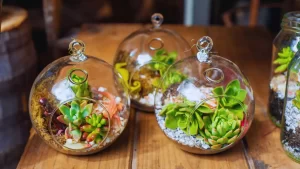Yes, you can make your own raw cat food at home. However, it is important to do your research and understand the risks involved before feeding your cat a raw diet.
Understanding the Benefits of Homemade Cat Food
There are a number of potential benefits to feeding your cat a homemade raw diet. These include:
- Healthier option for cats: Raw diets are made up of whole, unprocessed foods that are closer to what cats would eat in the wild. This can lead to improved health overall, including a stronger immune system, healthier skin and coat, and better digestion.
- Control over ingredients and quality: When you make your own raw cat food, you have complete control over the ingredients you use. This means you can avoid unhealthy additives and fillers, and you can choose high-quality meats, organs, and bones.
Preparing Homemade Cat Food: Raw vs. Cooked
There are two main ways to prepare homemade cat food: raw and cooked.
- Raw diets: Raw diets consist of raw meat, organs, and bones. These diets are thought to be the most natural for cats, and they can offer a number of health benefits. However, raw diets can also be risky, as they can harbor harmful bacteria that can make your cat sick.
- Cooked diets: Cooked diets are safer than raw diets, as the cooking process kills harmful bacteria. However, cooking can also destroy some of the nutrients in the food.
Appropriate Handling and Storage
Regardless of whether you choose to feed your cat a raw or cooked diet, it is important to handle and store the food properly to minimize the risk of foodborne illness. Here are some tips:
- Wash your hands thoroughly with soap and water before and after handling raw meat.
- Use separate cutting boards for raw meat and other foods.
- Refrigerate or freeze raw meat at 40 degrees Fahrenheit or below.
- Cook raw meat to an internal temperature of 165 degrees Fahrenheit.
- Discard any uneaten raw meat within two hours of feeding.
How to Make Raw Cat Food?
If you decide to make your own raw cat food, you will need to purchase a number of ingredients and equipment. Here are some of the things you will need:
- A food processor or grinder: This is used to grind up the meat, organs, and bones.
- Freezer-safe containers: These are used to store the food.
- A meat thermometer: This is used to make sure the meat is cooked to the correct temperature.
Here is a step-by-step guide to making raw cat food:
- Purchase fresh, human-grade meat, organs, and bones.
- Grind up the meat, organs, and bones in a food processor or grinder.
- Add any necessary supplements, such as taurine and calcium.
- Package the food in freezer-safe containers.
- Freeze the food until you are ready to use it.
Additional Tips
- Start your cat on a raw diet slowly to give their digestive system time to adjust.
- Monitor your cat’s health closely when feeding them a raw diet.
- Talk to your veterinarian before feeding your cat a raw diet.
Conclusion
Making your own raw cat food can be a healthy and rewarding experience. However, it is important to do your research and understand the risks involved. If you are not sure whether a raw diet is right for your cat, talk to your veterinarian.







